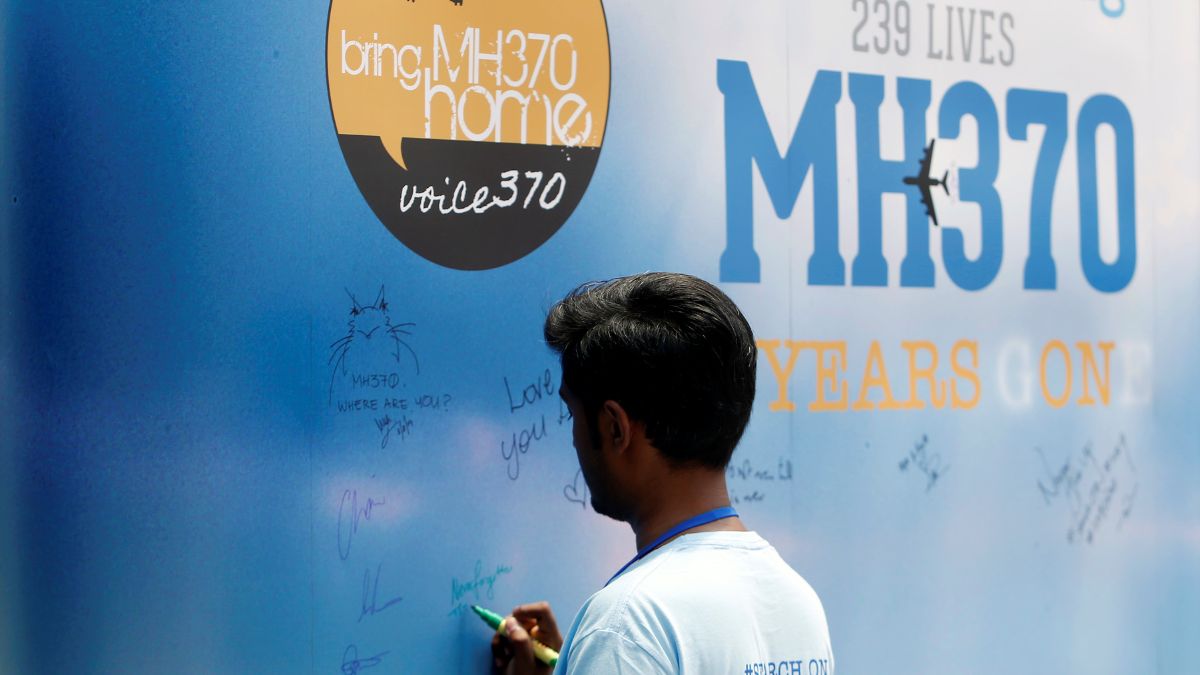A fresh attempt to locate Malaysia Airlines Flight MH370 has commenced, reigniting hope among families of those on board the vanished aircraft.
The search, led by deep-sea exploration firm Ocean Infinity, marks the latest effort to uncover answers in one of aviation’s greatest mysteries. The operation comes just days before the 11th anniversary of the plane’s disappearance on March 8, 2014.
Flight MH370, en route from Kuala Lumpur to Beijing, lost contact with air traffic control less than an hour after takeoff.
Despite extensive international search efforts, the Boeing 777 carrying 239 passengers and crew has never been found. Previous attempts — including one by Ocean Infinity in 2018 — were unable to locate the wreckage.
Grace Subathirai Nathan, whose mother was aboard the flight, expressed cautious optimism. “We are very grateful that our transport minister fulfilled his promise to be committed to the search for MH370 as well as for the continued perseverance and dedication from Ocean Infinity,” she told This Week in Asia.
“My deepest hope remains that the plane is found and this mystery is solved so that we can prevent something like this from happening again in the future.”
What is Ocean Infinity’s search plan?
The current mission will focus on four priority areas covering approximately 15,000 square kilometres of the southern Indian Ocean, where experts believe the aircraft likely came to rest.
Ocean Infinity’s vessel, the Armada 7806, arrived at the search zone in late February and will deploy advanced autonomous underwater vehicles (AUVs) to scan the seabed.
Malaysia’s Transport Minister Anthony Loke confirmed the government’s support for the initiative, stating, “We welcome the proactiveness of Ocean Infinity to deploy their ships.”
While the exact duration of the search has not been finalised, the company has reportedly allocated six weeks to the operation. Ocean Infinity is conducting the search on a “no-find-no-fee” basis, with Malaysia agreeing to pay $70 million if the wreckage is discovered and verified.
What do past search efforts and clues tell us?
The disappearance of MH370 triggered one of the most extensive and expensive search missions in aviation history. The initial phase, conducted by air and sea, covered 1.7 million square miles and lasted 52 days.
A subsequent underwater search spanning nearly three years combed 120,000 square kilometres of the Indian Ocean but failed to locate the plane.
In 2015, a flaperon — a wing component — was found on Réunion Island, confirming the aircraft’s fate in the Indian Ocean. Additional debris suspected to be from the plane was later recovered along the shores of Madagascar, Mauritius, Mozambique, and Tanzania. However, the aircraft’s main wreckage remains elusive.
While over 20 pieces of debris linked to MH370 have been found, their scattered locations have only deepened the mystery.
A fragment with the words “No Step” was discovered on a sandbank off Mozambique, and a wing flap was identified in Tanzania. Despite these finds, investigators have been unable to determine the final resting place of the aircraft.
What theories have surfaced till now?
The cause of the aircraft’s disappearance continues to be the subject of speculation. Official investigations concluded that the plane’s transponder was manually turned off before it deviated from its intended route.
Some theories suggest a deliberate act by the pilot or hijackers, while others propose mechanical failure or a fuel depletion scenario.
Kok Soo Chon, head of the safety investigation team, acknowledged that the plane’s deviation and loss of communication “irresistibly point” to “unlawful interference,” but no evidence identified a perpetrator or motive, reported The New York Times.
A 495-page report released in 2018 failed to provide definitive answers, devastating families who had hoped for closure.
What challenges will the deep-sea search face?
Searching for MH370 in the vast, largely uncharted southern Indian Ocean remains an enormous challenge. The region’s underwater terrain is among the most difficult to map, with deep trenches, ridges, and volcanic formations.
The remote location, about 1,500 kilometres west of Australia, further complicates search logistics.
The first large-scale underwater search was conducted by the governments of Malaysia, China, and Australia, covering over 46,000 square miles at a cost of $150 million.
When the official effort ended in 2017, Ocean Infinity stepped in with an independent search in 2018, though it, too, failed to locate the wreckage.
Will there finally be closure?
For the families of those on board, the resumption of the search offers a glimmer of hope, but also the risk of renewed disappointment. Many have spent years campaigning for authorities to continue searching, even traveling to Africa in search of debris.
“We just want to know where it is and what happened,” Jaquita Gonzales, wife of flight supervisor Patrick Gomes told The Guardian. “Memories come back like yesterday, it’s fresh in our heads.”
Last year, at the 10th anniversary memorial, Minister Loke reassured families that Malaysia was “steadfast in our resolve to locate MH370.” Now, with Ocean Infinity once again leading the charge, families wait anxiously to see whether this mission will finally uncover the truth.
Ocean Infinity is using improved technology compared to its 2018 search, with more sophisticated AUVs capable of deeper and more detailed scanning. Experts believe the renewed search is targeting an area they previously missed.
If the wreckage is found, it could finally provide answers to one of aviation’s most perplexing disappearances.
With inputs from agencies
)